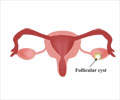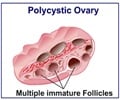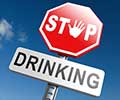- SOGC Clinical Practice Guideline - The Prevention of Ovarian Hyper Stimulation Syndrome by Shannon Corbett, MD, Ottawa ON Doron Shmorgun, MD, Ottawa ON Paul Claman, MD, Ottawa ON
- Royal College of Gynecologists and Obstetricians - Ovarian Hyper Stimulation Syndrome? - (https://www.rcog.org.uk/globalassets/documents/patients/patient-information-leaflets/gynaecology/pi_ohss.pdf)
- US National Library of Health - Complications of Ovarian Stimulation. Jacobs HS1, Agrawal R. - (https://www.ncbi.nlm.nih.gov/pubmed/10627768)
- US National Library of Medicine - Ovarian Hyper Stimulation Syndrome - (https://www.ncbi.nlm.nih.gov/pmc/articles/PMC3205536/)
- Predicting and Preventing Ovarian Hyper Stimulation Syndrome (OHSS): the need for individualized not standardized treatment by Klaus Fiedler1 and Diego Ezcurra - (https://www.ncbi.nlm.nih.gov/pmc/articles/PMC3403873/)
What is Ovarian Hyper Stimulation Syndrome?
Ovarian Hyper Stimulation Syndrome (OHSS) is a medical condition that occurs in some women who take hormonal medications such as Human Chorionic Gonadotrophin (HCG) to stimulate the production of eggs in the ovaries during fertility treatment. In Ovarian Hyper Stimulation Syndrome, too many eggs are produced by the ovaries and as a result the ovaries become swollen and painful.
Rarely, the condition can lead to serious illness or death. Ovarian Hyper Stimulation Syndrome is a serious complication of In-Vitro-Fertilization (IVF), a type of fertility treatment, in which a fertilized egg is implanted in the woman’s uterus. Women suffering from Polycystic Ovary Syndrome (PCOS) are more likely to develop OHSS.
What are the Causes of Ovarian Hyper Stimulation Syndrome?
Ovarian Hyper Stimulation Syndrome is an excessive response of the ovaries to the fertility drugs also known as gonadotropins. These include Follicle Stimulating Hormone (FSH), Luteinizing Hormone (LH) and Human Chorionic Gonadotropin (HCG). Usually OHSS occurs with injected fertility treatments but occasionally can occur with oral treatments such as clomiphene.
Gonadotropins act on the ovaries in women and are administered to women who cannot conceive naturally. Ovulation usually occurs within thirty six hours after the hormonal drugs are given.
What Happens During Ovary Hyperstimulation?
Excess of hormone medication in the body can lead to Ovarian Hyper Stimulation Syndrome (OHSS), in which the ovaries form 20 or more eggs (follicles) and become enlarged and painful.
Mediators released by the hyperstimulated ovaries cause increased capillary permeability and begin to leak fluid which causes swelling of the ovaries and other complications such as distension of abdomen, accumulation of fluid in the pleura and pericardium (pleural/pericardial effusion).
There is an also an increased risk of thrombosis as well as liver and kidney dysfunction.
What are the Symptoms and Signs of Ovarian Hyper Stimulation Syndrome?
- Abdominal pain:Thisoccursdue to raised pressure in the abdomen, ovarian torsion or rupture of ovarian cysts.
- Tenderness in region of the ovaries.
- Abdominal bloating: This is due to enlargement of the ovaries or accumulation of fluid in the abdominal cavity.
- Nausea and vomiting.
- Diarrhea.
- Blood clots in legs.
- Rapid weight gain of three to five kilograms or more within a few days.
- Dark urine.
- Shortness of breath: The enlarged ovaries and fluid collection in the abdomen restrict movement of the diaphragm. There may be Pleural Effusion (PE) with fluid passing from the abdomen into the pleural cavity.
- Fluid accumulation: This is the result of leakage of fluid through blood vessels within and outside the ovary.
- Hemoconcentration and hypercoagulability: There is a risk of thrombosis due to extravasations of fluid from the blood vessels resulting in thickening of the blood.
- Electrolyte imbalance: This is due to decreased renal perfusion and accumulation of excess electrolytes in the blood.

How do you Diagnose Ovarian Hyper Stimulation Syndrome?
- Ultrasound of the ovaries and abdomen: This test helps the doctor to check the size of the ovaries and presence of fluid in the abdominal cavity.
- Full blood count: to rule out hemoconcentration.
- Serum creatinine: to monitor the renal function.
- Coagulation tests: to measure the blood’s clotting ability and how long it takes to clot.
- Chest X-ray: to detect any pleural or pericardial effusion.
- Measurement of abdominal girth. This is useful in confirming the diagnosis as well as monitoring the patient’s response to treatment.

How do you Treat Ovarian Hyper Stimulation Syndrome?
Treatment is mainly supportive until the symptoms resolve on their own, usually within a week and longer if the woman is pregnant
- To relieve abdominal pain, painkillers such as paracetamol or ibuprofen may be taken.
- Taking anti nausea medication to help reduce nausea and vomiting
- Avoiding overexertion. It is advisable to maintain some light activity as total bed rest can increase the risk of some complications.
- Avoid sexual intercourse, as it may be painful and can cause a cyst in your ovary to rupture.
- Drink around ten to twelve glasses of fluids daily. Avoid alcohol or caffeinated drinks.
- Weighing yourself each day and measuring your abdominal girth.
- Measuring your urine output each day.
- Paracentesis: Excess fluid in the abdomen may be drained through a needle inserted in your abdominal cavity.
- Supportstockings: may be worn to prevent thrombosis in the legs.
- Blood tests to detect fluid and electrolyte disturbances for appropriate treatment
- Heparin injections: are given for thinning the blood to prevent blood clots.
- If complications occur, more aggressive treatment, including intravenous (IV) fluids or surgery for a ruptured ovarian cyst may be required.
How do you Prevent Ovarian Hyper Stimulation Syndrome?
During fertility treatment with hCG, risk of OHSS development is regularly monitored by ultrasound scans and treatment modified according to risk.
- By adjusting drug dosage: Low doses of gonadotropins are given to stimulate your ovaries
- Avoiding the use of HCG: Alternatives to HCG to reduce the risk of OHSS such as use of Gonadotropin Releasing Hormone (Gn-RH) agonist to trigger ovulation are being studied. If OHSS risk appears to be very high, the doctor may not administer HCG to the patient
- Coasting: In case a large number of follicles have already developed or if your estradiol levels are high the doctor will prefer to wait for a few days before giving HCG to trigger ovulation
- Aspiration of follicles and freezing of the embryos: All the mature and immature ovarian follicles are removed to reduce the chance of OHSS. The mature follicles are then fertilized and frozen. When required the embryos are thawed and transferred back to your uterus during a subsequent cycle
- Use of progesterone instead of hCG for luteal phase support
- Administration of cabergoline, a dopamine antagonist in women at high risk from the day of hCG administration. Cabergoline reduces capillary permeability and protects against some of the complications
- Metformin in women with PCOS has been shown to be associated with a lower incidence of OHSS
- Administration of hydroxyethyl starch (HES) infusions prophylactically in women at high risk
What are the Complications of Ovarian Hyper Stimulation Syndrome?
In OHSS the ovaries become distended with fluid from the blood vessels and the ovarian follicles leading to complications such as:
- Thrombosis in large blood vessels, usually in the legs.
- Multiple pregnancies.
- Fluid collection in the abdomen, pleural effusion and pericardial effusion.
- Ovarian torsion or twisting of the ovary.
- Ovarian rupture.
- Acute renal failure.
- Electrolyte imbalance.
- Preterm delivery.
- Death.








